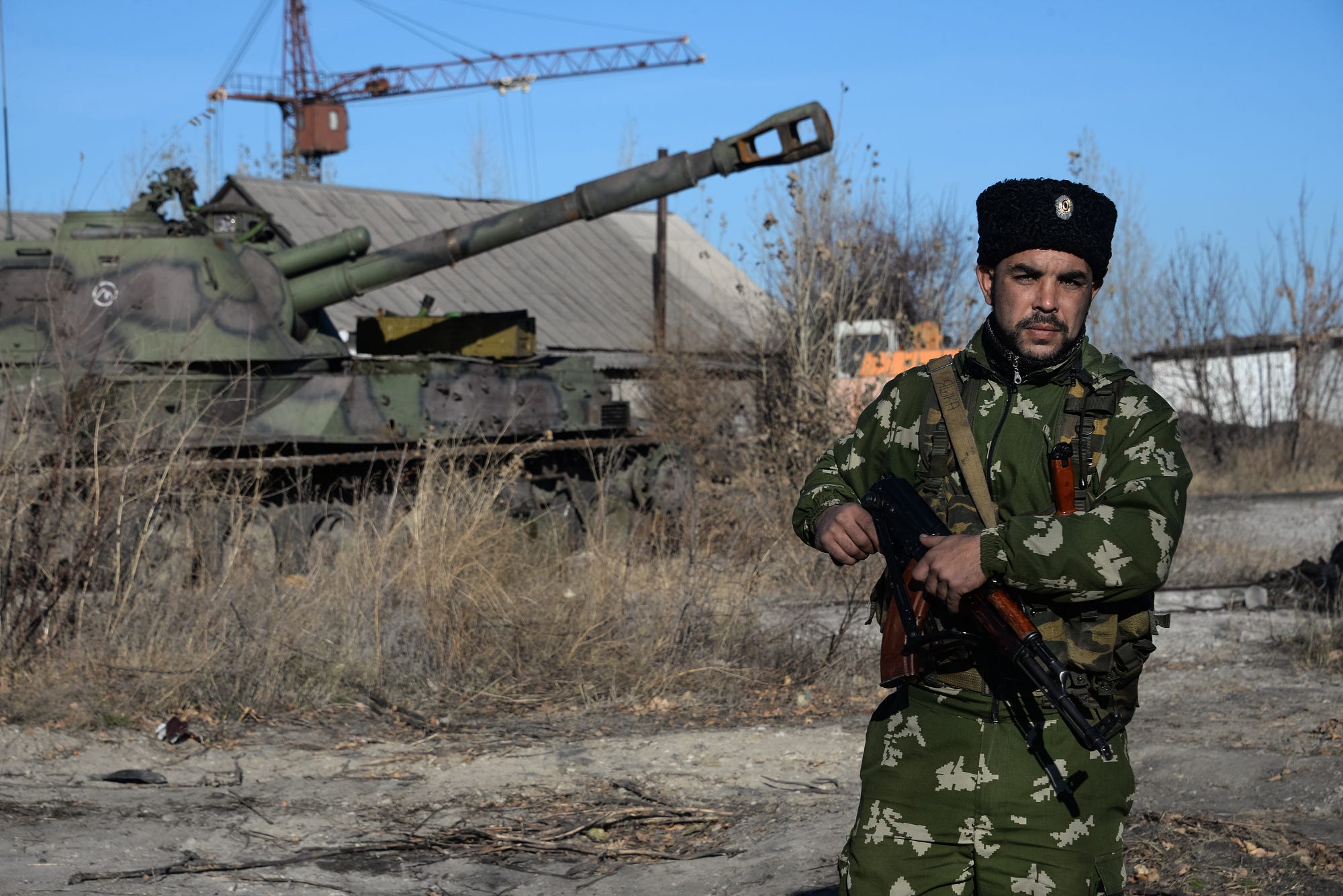Nov 14
Unless a major separatist offensive changes everything
This summer, the war in eastern Ukraine looked a lot different than it does now. Ukrainian tanks rolled towards the separatist strongholds of Donetsk and Luhansk, only for the pro-Russian fighters to throw them back with the aid of Kremlin-supplied tanks.
The front lines changed rapidly. Ukrainian troops would capture one town only to disappear in a chaotic retreat. Volunteer battalions got cut off and destroyed. Separatist groups fought each other in disorganized street battalions.
Now the conflict is starting look like a conventional war—with both sides digging in along a fixed front line. Neither side appears strong enough to uproot the other. That is, unless separatists go on the offensive … with serious Russian help.
“Both sides are intensely preparing for winter. And above all, to active fighting,” writes Dmytro Tymchuk, a pro-Ukrainian blogger and activist.
Tymchuk is highly-regarded for his excellent sources within the Ukrainian military. To be sure, he’s writing from only one side of the conflict. His updates are a frenetic mix of stories about logistical problems, records of separatist attacks and worries about where the pro-Russian forces could push next.
His work isn’t comprehensive. He doesn’t write much about Ukrainian army attacks—likely for security reasons.
But Tymchuk’s blog does offer an inside look at what the Ukrainian army is dealing with. He has tracked more than 100 separatist attacks on Ukrainian army positions in the past week—at the same time that dozens of tanks, artillery pieces and supply trucks have crossed the border from Russia to reinforce separatist units.
 Russian Cossack fighter in eastern Ukraine on Nov. 11. Mstslav Chernov/AP photo. Ukrainian soldier heads east on Sept. 30. Efrem Lukatsky/AP photo
Russian Cossack fighter in eastern Ukraine on Nov. 11. Mstslav Chernov/AP photo. Ukrainian soldier heads east on Sept. 30. Efrem Lukatsky/AP photo
Compared to the more rapid movements earlier in the war, the fighting has now settled along a line just east of the Black Sea port of Mariupol, stretching north along the Kalmius River, before bending around Donetsk and slicing through the Donetsk International Airport.
During one battle near Mariupol in recent days, the separatists exposed several of their tanks and gunmen to the Ukrainians’ line of sight. The Ukrainians hit them with “intense mortar fire,” Tymchuk writes. The barrage knocked out the tanks.
Some of the heaviest fighting is still taking place around the Donetsk airport. Separatist video uploaded this week shows a group of gunmen encamped in a control tower along the runway—and firing machine guns at a passing Ukrainian truck.
“Tank incoming!” one fighter shouts. The separatists appear to fire an anti-tank rocket, but miss their target. A Ukrainian armored vehicle then rushes towards the tower, firing at the gunmen as they dive for cover—bits of the building shattering around them.
The way Tymchuk sees it, the separatists are becoming better armed. He mentions a new high-power sniper rifle targeting Ukrainian troops. The separatists also frequently use mortar and artillery fire as a way to practice and refine their skills.
Their officers and specialists—Tymchuk writes that these are Russian army officers—use artillery fire as a way of building up databases of targets. If the separatists go on the attack, they could have support from lethal and highly accurate indirect fire.
In the south, toward Mariupol, the separatist are “deep in battle formations,” Tymchuk writes. At the front are small, highly-mobile groups, “mainly consisting of local militants,” he adds. The tanks sit ready behind them.
Beyond Donetsk, the front line bends into a bulge to the northeast held by Ukrainian troops. This is where the separatists have directed their heaviest artillery fire. Tymchuk writes that he’s worried a Russian-backed offensive could rush toward the Svitlodarsk reservoir, cutting off the troops holding the salient.
Across the front, small teams of separatist fighters probe weak spots.
Further to the north near Luhansk, Ukrainian troops are using machine shops located near the front line to repair equipment, owing to a scarcity of fresh equipment coming in. “Continue active management of the war becomes a problem in many areas—from the electoral component to financial—for the ruling regimes in both countries,” Tymchuk writes.
The big question is whether the separatists will go on the offensive—perhaps within days—bolstered by a huge surge in Russian military equipment that has moved in over the past week. Tymchuk’s philosophy is that it’s impossible to predict, but that the Ukrainians should prepare for the worst.
There’s also limited information coming from the separatist side, owing to the particularly secretive nature of Russia’s support.
We know more than 30 tanks have recently crossed into Ukraine from Russia. One number analysts commonly cite in the press is that there are 100 tanks in eastern Ukraine on the pro-Russian side. But we don’t know how many tanks the separatists have lost to enemy fire or breakdowns.
But they are building up, and refining their ability to hit Ukrainian positions if they do launch a major attack.
No comments:
Post a Comment